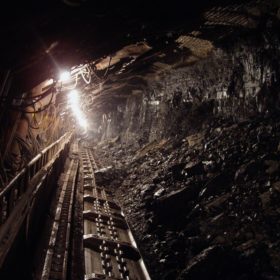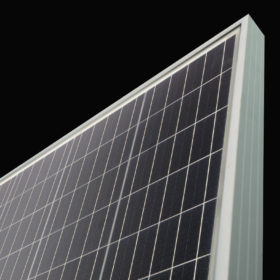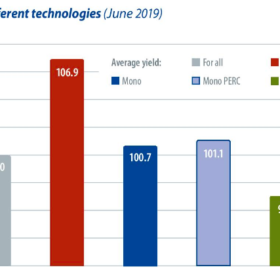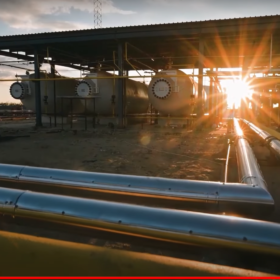The specter of PV protectionism: Shifting destinations
Trade tariffs are spreading across the global PV industry. The United States has been especially active with its sandwich of old antidumping and countervailing duties coupled with new Section 201, 232 and 301 duties. Some of these are part of the Sino-U.S. trade dispute; others impact not only Chinese producers, but manufacturers around the world. So, what will be the impact of this new era of PV protectionism on the solar sector?
The long read: Floating PV – niche market or transformative disruptor?
Why on earth would you want to install PV on water? There seem to be plenty of safer sites for solar PV on solid ground or stable rooftops. Nicolas Choleur of Everoze highlights the key requirements for the bankability of floating PV, right through the project life cycle, from development to dismantling.
The energy transition is easily affordable but all hope of 1.5C warming will vanish in 2028
Technical consultancy DNV GL has published its Energy Transition Outlook 2019. While the electric vehicle, storage and renewable energy industries are likely to see significant rises in demand, the sobering conclusion is the world will miss carbon reduction targets by a long shot.
Eric Luo: China will see just 20-25 GW of solar per year through 2025
The GCL System chief executive made comments that fly in the face of an expected solar gold rush in China that analysts predict will start this month. Though rising overseas demand will address overcapacity fears, according to Luo, the soundbite is sure to chill PV boardrooms across the world’s biggest solar market.
The long read: Both sides of the debate
Choosing the best material to cover the backside of a module has long been a contentious issue, and the rise of bifacial technology has brought further complexity to the debate. With transparent backsheet materials quickly making their way to market, the Intersolar Europe edition of the Quality Roundtable event series sought to bring some clarity to the rear side of modules, and illuminate some of the issues that can occur in the field – both with glass-glass and glass-backsheet modules.
VPPs as congestion buster
Two related challenges have become barriers to increasing penetration levels for rooftop solar: the hosting capacity of the grid, and the need to maintain stability during periods of peak demand. The Future PV Roundtable, held alongside The smarter E event in Munich, looked at how distributed energy resources such as PV and battery storage, along with demand-side flexibility, can help to meet these challenges – all thanks to VPPs.
Chinese company Ganfeng Lithium prepares solid-state battery test line
The energy storage company is ramping up R&D efforts to try and fast-track commercialization of the more productive – and more expensive – battery tech. The news was announced as part of an uninspiring first-half update thanks to falling lithium salt prices.
IHS Markit: Trackers to account for a third of PV installations
New analysis predicts more than 150 GW of tracker capacity will be installed in the next five years – around a third of all ground mount projects up to 2024. Rapid growth in Europe, the Middle East and Africa; and the better cost structures possible from combining trackers and bifacial modules are singled out as key trends.
Jinko: ‘The days of mono will soon be behind us’
A spokeswoman from the Chinese manufacturer of the Swan series of double-sided solar panels says monofacial modules will soon be consigned to residential use as the price gap between them and higher-yielding bifacial products rapidly closes.
pv magazine test: Latest results
pv magazine test is a cooperative module testing procedure involving pv magazine, CEA and Gsolar. All tests are carried out at Gsolar’s test laboratory in Xi’an, China. CEA supervises them and designed both the indoor and outdoor testing procedures.














